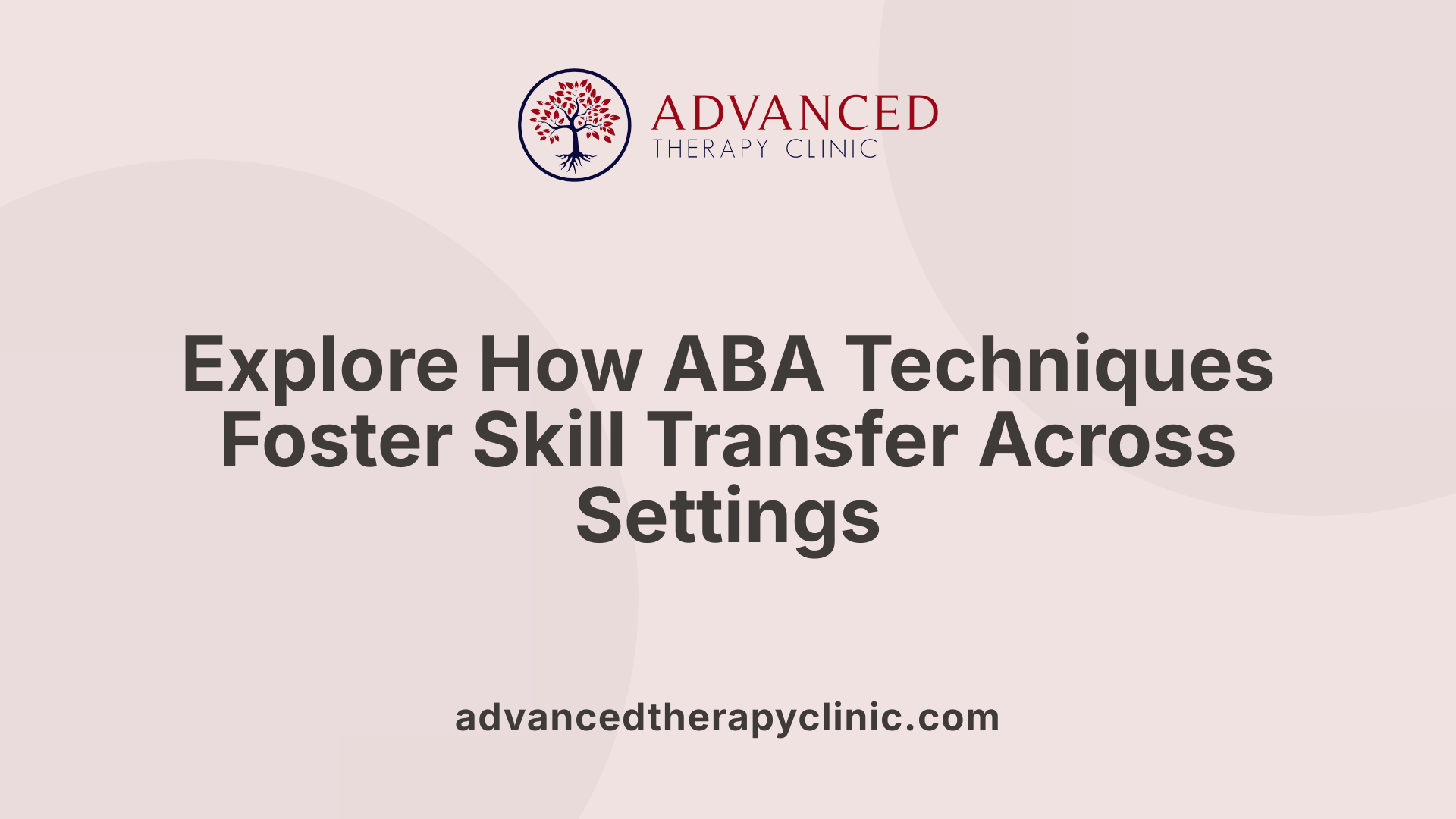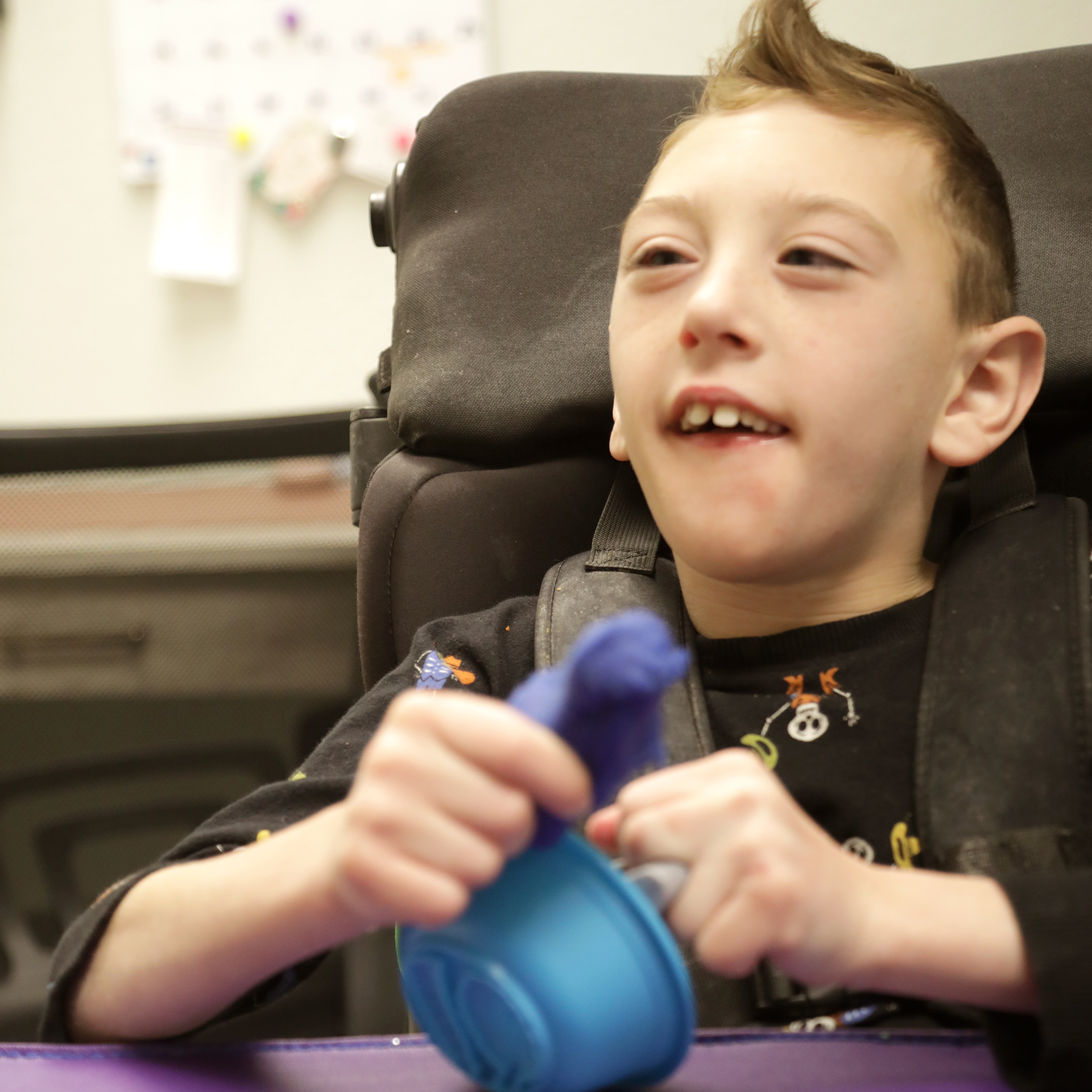How ABA Therapy Helps with Learning New Skills in New Environments


Understanding the Role of ABA in Learning in Diverse Environments
Applied Behavior Analysis (ABA) is a research-backed approach that supports individuals—especially those with autism—in acquiring new skills and adapting to various environments. By leveraging scientifically grounded principles and flexible teaching strategies, ABA enables meaningful, real-world learning. This article explores how ABA therapy helps individuals develop new abilities in unfamiliar settings, ensuring these skills are functional and sustainable across everyday contexts.
Foundations of ABA and Its Application to Learning

What are the key principles and methods of ABA therapy for skill development?
Applied Behavior Analysis (ABA) is a therapy rooted in scientific principles that help understand and change behaviors in meaningful ways. Its foundation lies in the belief that behavior is influenced by environmental factors and can be shaped through systematic techniques.
One of the main principles of ABA is reinforcement. When a behavior is followed by a valued reward, it is more likely to happen again. Conversely, undesirable behaviors can be decreased using strategies like extinction or planned ignoring.
ABA employs a variety of techniques to teach new skills and modify behaviors. For example, discrete trial training (DTT) involves structured, repeated practice of specific skills with clear instructions and rewards. Natural Environment Teaching (NET) integrates learning into everyday activities, focusing on real-world skills like socialization and communication.
Other methods include prompting to guide behavior, shaping to gradually develop complex skills, modeling to demonstrate behaviors, and chaining to teach a sequence of actions. These approaches are tailored to each individual.
A vital feature of ABA is its data-driven approach. Practitioners collect ongoing data on behaviors to evaluate progress. This allows therapists to modify strategies promptly and ensure interventions are effective.
The process is guided by the seven dimensions of ABA, which include generality (skills applied across settings and time), effectiveness, and technological rigor, ensuring that therapies are scientifically supported and comprehensive.
How does ABA personalize treatment?
ABA therapy is highly individualized. Every plan is based on detailed assessments of a person's current skills, challenges, and environments. Certified behavior analysts develop specific goals—such as improving communication, social skills, or daily living—and use data to track progress.
Therapies are adaptable, meaning interventions can be adjusted as a child grows or as new needs arise. Whether delivered in a home, school, or community setting, ABA's flexible methods focus on making meaningful improvements in everyday life.
This tailored, evidence-based approach helps each person build essential skills that support independence and social participation, making ABA a widely respected treatment for children with autism and other developmental differences.
Core Components of ABA That Enable Skill Generalization

What are the key principles and methods of ABA therapy for skill development?
Applied Behavior Analysis (ABA) is grounded in scientific principles that focus on understanding, teaching, and modifying behaviors that are socially significant. Central to ABA are techniques like reinforcement, which encourages desirable behaviors by rewarding them, and prompting, which assists individuals in performing new skills. Methods such as discrete trial training (DTT) break down skills into small, manageable steps, while natural environment teaching (NET) integrates learning into everyday life activities.
These approaches are complemented by shaping behaviors gradually, modeling appropriate actions, and chaining multiple steps together to build complex skills. Individualized treatment plans are designed based on careful data collection, enabling practitioners to track progress, identify what strategies work best, and make necessary adjustments. The entire framework of ABA is guided by seven core dimensions—including generality, effectiveness, and technological precision—to ensure interventions are scientifically sound and sustainable across various environments.
Overall, ABA combines structured teaching methods with flexible, real-world applications, making it an effective tool to foster skill development and promote lasting behavior change.
Reinforcement strategies
Reinforcement is a cornerstone of ABA and involves providing valued rewards to encourage desired behaviors. Positive reinforcement, such as praise, tokens, or preferred activities, increases the likelihood that the behavior will recur. These reinforcement strategies are carefully selected to match each individual’s preferences, ensuring motivation and engagement.
Effective reinforcement not only promotes acquisition of skills but also supports generalization across different settings. Consistent use of reinforcement helps reinforce new behaviors, making them more resistant to extinction.
Data collection and monitoring
Ongoing data collection is vital to ABA therapy. Therapists systematically record behavior frequency, duration, or intensity, providing objective measures of progress. This data guides decision-making, allowing practitioners to evaluate whether interventions are successful or need adjustment.
Monitoring helps identify patterns, ensure skills are maintained over time, and verify that goals are being met. Visualization tools like charts or graphs make it easier to interpret progress and plan future steps.
Individualized treatment plans
Every person receiving ABA therapy benefits from a customized plan tailored to their unique strengths, needs, and family situation. Behavior analysts conduct assessments to identify target behaviors, set realistic goals, and select appropriate teaching methods.
Personalization extends to choosing optimal learning environments, scheduling sessions, and involving caregivers in reinforcement and skill practice. This individualized approach ensures that interventions are relevant, engaging, and effective, supporting meaningful skill transfer to real-world situations.
| Component | Description | Examples |
|---|---|---|
| Reinforcement Strategies | Using rewards to encourage desired behaviors | Praise, tokens, preferred activities |
| Data Collection & Monitoring | Tracking behavioral progress for informed decisions | Frequency counts, duration logs |
| Individualized Plans | Tailoring therapy to each person’s unique needs | Personal goals, family involvement |
Focusing on these core elements ensures ABA therapy remains effective at promoting skill generalization, helping individuals with autism develop functional, lasting abilities suited for everyday life.
Natural Environment Teaching (NET): Teaching in Real-Life Contexts

What is Natural Environment Teaching and why is it important?
Natural Environment Teaching (NET) is a personalized teaching approach used in ABA therapy that emphasizes learning skills within everyday environments familiar and meaningful to the individual. Unlike structured methods, NET integrates learning into natural routines such as play, mealtime, or outings, making skills more applicable and easier to generalize across different settings.
The significance of NET lies in its capacity to promote real-world competence. By teaching children in settings where they naturally encounter relevant tasks and social situations, learners develop skills that are directly transferable to their daily lives. This approach also encourages motivation and engagement, as the activities are interest-based and meaningful.
Techniques used in NET, including incidental teaching and pivotal response training
Several naturalistic teaching methods are employed within NET to optimize learning:
Incidental Teaching: This method capitalizes on the child's natural interests by encouraging spontaneous communication. When a child shows interest in an object or activity, the therapist prompts with questions or comments that facilitate language and social responses, such as asking "What is that?" or prompting the child to label the item.
Pivotal Response Training (PRT): Focused on pivotal areas like motivation and self-initiation, PRT uses positive reinforcement to motivate the child to participate actively. It aims to develop critical skills that influence multiple other areas, such as self-management and responsiveness to cues.
Natural Language Paradigm: This approach is primarily used for non-verbal children. It involves arranging the environment to encourage communication, often rewarding the child for leaving a preferred activity to seek social interaction or objects.
Why is child-led, contextual learning beneficial?
Child-led learning in the natural environment gives children a sense of control and relevance, significantly boosting engagement. Activities are tailored to the child's personal interests, which increases motivation and participation. For example, using a child’s favorite toy to teach requesting or imitation creates a fun, supportive learning atmosphere.
This approach also minimizes disruptive behaviors, as activities are aligned with the child's natural routines and preferences. Over time, these experiences help children learn to generalize skills across different contexts and to different people.
Involving caregivers in NET is crucial. When parents and teachers are trained to apply these strategies, children benefit from consistent reinforcement across home, school, and community settings. This consistency strengthens skill retention and supports the child's independence.
How does ABA therapy support the learning of new skills in unfamiliar environments?
ABA therapy supports the learning of new skills in unfamiliar environments primarily through NET, which utilizes real-world situations and routines familiar to the individual. By leveraging natural interactions, activities, and motivation, NET promotes generalization of skills across different settings such as home, school, and community. Techniques like incidental teaching, mand-model, and activity scaffolding encourage spontaneous communication and meaningful participation in everyday activities. Tailoring strategies to the individual's interests and involving caregivers help ensure skills are transferred and maintained outside structured therapy sessions. Overall, this approach fosters versatile, functional learning that can be applied widely, promoting independence and social growth in varied environments.
Promoting Skill Generalization Across Settings

How does ABA therapy promote skill generalization across different settings?
Skill generalization is a vital goal in ABA therapy, ensuring that children can apply what they learn in therapy to everyday life. To achieve this, ABA uses a variety of strategies that involve teaching skills in multiple environments and with different people.
One effective approach is to teach skills across various natural settings. For example, a child might learn to ask for help at home, in school, and during community outings. This diversity of environments, including the home, classroom, and local park, helps children encounter different stimuli, responses from different people, and materials, strengthening their ability to transfer skills.
Practitioners also use multiple examples and varied instructions. Instead of teaching a single way to perform a skill like requesting a toy, therapists introduce different ways, such as asking verbally, gesturing, or pointing. This variation helps children understand the concept of the skill itself, making it more adaptable.
Involving multiple instructors—parents, teachers, and therapists—further promotes generalization. When children practice skills with different people, they learn to respond appropriately in different social contexts and routines.
Natural Environment Teaching (NET) complements these strategies by embedding learning into everyday activities, like play or mealtime. During spontaneous interactions, children are encouraged to use their skills, promoting natural reinforcement and making behaviors more likely to stick.
Caregiver involvement is crucial. Parents and teachers are trained to practice skills outside of therapy sessions, reinforcing what the child learns in a variety of situations. This consistent reinforcement supports the child's ability to use skills independently in real-world contexts.
Overall, systematized methods such as teaching across multiple settings, using multiple examples, involving varied instructors, and incorporating natural cues create resilient, adaptable skills. These strategies not only foster independence but also improve social integration and functional use of learned behaviors, ensuring lasting positive impacts.
Applying Skills in Daily Life and Transitioning Between Environments

How does ABA therapy help individuals apply skills learned in structured sessions to everyday situations?
ABA therapy focuses heavily on helping individuals transfer skills from controlled, therapy settings to real-world environments. This is achieved through naturalistic teaching strategies that involve practicing skills across various contexts, with different people, and using diverse materials. For instance, therapists may program common stimuli—like familiar objects or settings—so that learned behaviors are not tied to just one scenario.
Techniques such as loose training and programming for stimulus generalization ensure that behaviors are adaptable and not solely dependent on specific cues or prompts. Role-playing, social modeling, and reinforcement are incorporated in natural environments, helping individuals to internalize skills like conversation, self-care, or social interactions.
Creating personalized generalization plans is also a vital part of ABA. These plans include strategies for introducing variability and natural cues—such as unstructured play or spontaneous questions—to reinforce that skills are usable in everyday life. This approach encourages independence, confidence, and seamless behavior transfer from therapy to routine daily activities.
Ultimately, ABA’s emphasis on practicing skills in multiple, real-life contexts prepares individuals to function more effectively outside structured sessions, promoting meaningful social engagement and daily independence.
ABA in Educational Settings and Its Effectiveness

Implementing ABA in schools
Applied Behavior Analysis (ABA) has become an integral part of educational strategies for students with autism and other developmental disabilities. Schools implementing ABA typically create structured programs tailored to each child's specific strengths and challenges. These programs often include breaking down complex academic and social tasks into smaller, manageable steps, and utilizing visual aids, timers, and routines to foster independence and reduce anxiety.
Behavior analysts and trained therapists work closely with teachers and families to ensure consistent application of ABA principles across settings. Activities like visual schedules and positive reinforcement are commonly used to support transitions, improve task engagement, and promote adaptive behaviors. This seamless integration helps reinforce learning in natural environments like classrooms, playgrounds, and community outings.
Teaching academic and social skills
ABA focuses on enhancing both academic and social abilities crucial for daily life. In academic contexts, children learn fundamental skills like reading, math, and language through engaging, game-like methods such as picture cards and manipulatives. To support social development, ABA emphasizes teaching communication skills, understanding social cues, and engaging in reciprocal interactions.
Techniques like natural environment teaching (NET) foster real-world skill application, encouraging children to initiate conversations, share interests, and participate actively in group activities. These interventions often involve family members and peers, promoting generalization across different people and settings.
Promoting inclusive education
Inclusion is a core goal of ABA in schools. Customized ABA strategies help children participate meaningfully alongside their peers, fostering a sense of belonging. Visual schedules, social stories, and peer-mediated interventions are designed to support collaborative learning and social integration.
Furthermore, ABA's data-driven approach ensures ongoing assessment and adjustment of teaching methods, aligning with each child's evolving needs. This personalized support not only boosts academic success but also encourages social competence and independence.
Effectiveness of ABA therapy in educational settings
ABA therapy in educational settings is highly effective in improving a range of social, communication, and academic skills in children, particularly those with autism spectrum disorder. Research has demonstrated that structured ABA interventions significantly enhance social interactions, reduce problematic behaviors, and promote language development, leading to better daily functioning and greater independence.
Techniques such as discrete trial training, naturalistic teaching, and peer-mediated interventions facilitate skill generalization in meaningful environments. Implementing ABA in schools supports inclusive education by catering to individual strengths and addressing behavioral and learning challenges.
Overall, ABA is recognized as an evidence-based best practice that can lead to significant developmental gains for students with diverse needs, equipping them for greater success both inside and outside the classroom.
Harnessing ABA for Broader Life Skills and Long-term Success
ABA therapy is a dynamic and adaptable approach that facilitates the acquisition of new skills and their application across various environments, including unfamiliar ones. By employing methods like Natural Environment Teaching, task analysis, and reinforcement systems, ABA addresses the challenge of generalization, ensuring skills learned are functional and sustainable. Its proven effectiveness in educational settings and natural contexts highlights the importance of caregiver involvement and tailored plans. Ultimately, ABA's comprehensive strategies promote independence, social integration, and lifelong learning, empowering individuals to navigate an ever-changing world with confidence.
References
- Applied Behavior Analysis (ABA) | Autism Speaks
- ABA Therapy vs Traditional Preschool | Divine Steps ABA
- Natural Environment Teaching (NET) in ABA | Autism Resources
- Unlocking the Benefits of ABA Therapy for Children with Autism
- What is Generalization in ABA?
- Understanding Natural Environment Teaching in ABA Therapy
- Preparing for the New School Year: School-Based ABA Therapy
- How ABA Therapy Helps Children Apply Skills in the Real World
- The effectiveness of applied behavior analysis program training on ...
Recent articles

How Pediatric Therapy Helps Kids Thrive across Montana and Wyoming
A supportive guide for families exploring therapy options in Billings, Butte, Missoula or Sheridan.

How to Choose the Right Pediatric Therapy Clinic in Billings, Montana
A Parent‑Friendly Guide To Finding The Best Support For Your Child

Expressive Speech Delay 2-Year-Old
Understanding and Addressing Expressive Speech Delay in Toddlers

How Speech Recognition Works
Unlocking the Power of Speech Recognition in Therapy and Healthcare

Autism and Head Size
Understanding the Complex Relationship Between Autism and Head Size

Occupational Therapy in Autism
Enhancing Independence and Quality of Life Through Occupational Therapy in Autism

